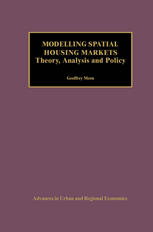

Most ebook files are in PDF format, so you can easily read them using various software such as Foxit Reader or directly on the Google Chrome browser.
Some ebook files are released by publishers in other formats such as .awz, .mobi, .epub, .fb2, etc. You may need to install specific software to read these formats on mobile/PC, such as Calibre.
Please read the tutorial at this link: https://ebookbell.com/faq
We offer FREE conversion to the popular formats you request; however, this may take some time. Therefore, right after payment, please email us, and we will try to provide the service as quickly as possible.
For some exceptional file formats or broken links (if any), please refrain from opening any disputes. Instead, email us first, and we will try to assist within a maximum of 6 hours.
EbookBell Team

4.3
58 reviewsSpatial fixity is one of the characteristics that distinguishes housing from most other goods and services in the economy. In general, housing cannot be moved from one part of the country to another in response to shortages or excesses in particular areas. The modelling of housing markets and the interlinkages between markets at different spatial levels - international, national, regional and urban - are the main themes of this book.
A second major theme is disaggregation, not only in terms of space, but also between households. The book argues that aggregate time-series models of housing markets of the type widely used in Britain and also in other countries in the past have become less relevant in a world of increasing income dispersion. Typically, aggregate relationships will break down, except under special conditions. We can no longer assume that traditional location or tenure patterns, for example, will continue in the future.
The book has four main components. First, it discusses trends in housing markets both internationally and within nations. Second, the book develops theoretical housing models at each spatial scale, starting with national models, moving down to the regional level and, then, to urban models. Third, the book provides empirical estimates of the models and, finally, the models are used for policy analysis. Analysis ranges over a wide variety of topics, including explanations for differing international house price trends, the causes of housing cycles, the role of credit markets, regional housing market interactions and the role of housing in urban/suburban population drift.